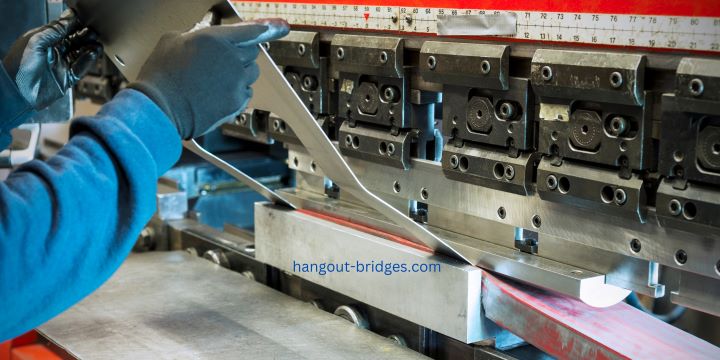Key Takeaways
- Press brakes are essential tools in metal fabrication.
- They offer precision in bending and shaping metal sheets.
- Understanding their role can enhance production quality and efficiency.
Table of Contents
- Introduction: What is a Press Brake?
- Types of Press Brakes
- Mechanical Press Brakes
- Hydraulic Press Brakes
- CNC Press Brakes
- Key Advantages of Using Press Brakes
- Factors to Consider When Choosing a Press Brake
- Maintenance Tips for Longevity
- Conclusion: The Future of Press Brakes
Introduction: What is a Press Brake?
Press brakes are vital in the realm of metal fabrication. They precisely bend and shape metal sheets to meet specific design requirements. Today, these machines are indispensable in various manufacturing processes. Many industries rely on new and used press brakes to maintain cost efficiency while ensuring high-quality output.
While modern technology has introduced tools like laser cutters and water jets, the press brake remains the cornerstone of precise metal bending. Its ability to create exact angles and bends makes it an invaluable tool in production lines where precision and repeatability are paramount. Whether crafting small, intricate parts or significant structural components, press brakes provide the necessary flexibility and reliability.
Types of Press Brakes
- Mechanical Press Brakes: Mechanical press brakes are known for their straightforward design and reliable performance. They are ideal for simple bending tasks and can operate with considerable speed. These machines use a flywheel powered by an electric motor, which engages and disengages the clutch to create the bending force. Due to their mechanical nature, these press brakes are often faster than their hydraulic counterparts but may need more finesse for more complex bending tasks. Despite their simplicity, mechanical press brakes are highly effective in settings where high production speeds are essential. They are a staple in many fabrication shops due to their robustness and ease of maintenance. Operators value these machines for their straightforward operation, making them a go-to choice for repetitive bending operations.
- Hydraulic Press Brakes: Hydraulic press brakes offer greater power and versatility, making them suitable for complex bending operations. They use hydraulic fluid to exert pressure, ensuring consistent performance. With adjustable stroke length and varying pressure capabilities, hydraulic press brakes can handle a broader range of materials and thicknesses, providing precise control over the bending process. The versatility of hydraulic press brakes makes them ideal for tasks that require different bending forces and angles. They are equipped with features such as back gauges and programmable controls, which aid in producing precise bends. Hydraulic systems require less maintenance as they have fewer moving parts and can deliver a smooth, controlled force.
- CNC Press Brakes: CNC (Computer Numerical Control) press brakes represent the pinnacle of precision and automation. They are programmed to perform intricate bends with minimal human intervention, ensuring high repeatability. CNC press brakes are especially useful in producing parts that require exact specifications. Operators can input specific measurements and angles, and the machine will perform the bends accurately every time.
- CNC press brakes use advanced software to control the bending process, allowing for the creation of complex shapes and curves that would be difficult to achieve manually. They can also store multiple programs, making them highly efficient for batch production. The integration of CNC technology has significantly reduced the margin for error, contributing to higher-quality products and reduced waste.
Key Advantages of Using Press Brakes
- Precision: Ensures consistent and accurate metal bends. This precision is essential for parts that must fit together perfectly in assemblies.
- Efficiency: Speeds up production processes. Press brakes can complete bends quickly, reducing manufacturing time and increasing throughput.
- Versatility: Can handle a wide range of materials and thicknesses. Whether working with thin sheets of aluminum or thick plates of steel, press brakes can adapt to various tasks.
Moreover, press brakes’ precision minimizes waste, a significant cost-saver in manufacturing. Their efficiency allows businesses to meet tight production schedules without compromising quality. Press brakes’ versatility also means manufacturers can take on more projects, increasing their marketability and competitiveness.
The manufacturing industry’s ability to produce high-quality bends with minimal waste and in less time is a significant advantage. This reduces costs and helps companies maintain a consistent output, effectively meeting customer demands.
Factors to Consider When Choosing a Press Brake
- Capacity: Ensure the press brake can handle the material type and thickness you work with. Selecting a press brake with the appropriate capacity ensures it can meet your production needs without overloading the machine.
- Accuracy: Look for features that ensure precise bending. Accuracy is crucial for maintaining the quality and consistency of the finished product.
- Automation: Consider CNC options for complex tasks. Automation can significantly reduce the time needed for setup and increase productivity.
- Safety Features: Operator safety is paramount. Modern press brakes have safety mechanisms such as light curtains and emergency stop buttons to protect the operator.
Selecting the right press brake can significantly impact production quality and efficiency. Evaluating your specific needs and matching them with the press brake’s capabilities is crucial. Ensuring the machine aligns with your operational requirements will improve productivity and enhance the quality of your products.
Investing in a press brake that suits your needs can lead to long-term benefits, including lower operational costs, improved safety, and enhanced production capabilities. It is worth researching and comparing different models to find the best fit for your manufacturing processes.
Maintenance Tips for Longevity
- Regularly inspect and lubricate moving parts. Maintenance routines should include checking for wear and tear on all movable components to prevent unexpected breakdowns.
- Monitor hydraulic fluid levels and quality. Keeping the hydraulic fluid clean and at the correct level is essential for maintaining consistent machine performance.
- Ensure proper alignment of the machine tools. Misalignment can cause inaccuracies in bending and increase wear on the machine.
- Conduct periodic professional maintenance checks. Expert technicians can identify potential issues before they become serious problems, ensuring the machine remains in optimal condition.
Proper maintenance ensures that press brakes remain in optimal working condition, preventing costly downtime and extending lifespan. Regular upkeep can help identify potential issues early, reducing the risk of machine failure and ensuring consistent performance. Following a thorough maintenance schedule is an investment in the longevity and reliability of your equipment.
Understanding the importance of maintenance and adhering to these tips can save manufacturers significant time and money. A well-maintained press brake performs better and contributes to a safer working environment.
Conclusion: The Future of Press Brakes
With technological advancements, press brakes are set to become even more efficient and user-friendly. Innovations like IoT integration and AI-driven controls could revolutionize their use in manufacturing. As these technologies evolve, press brakes will play a critical role in metal fabrication.
The future of press brakes looks promising. It has the potential to integrate innovative technologies that can further enhance precision, efficiency, and ease of use. As more manufacturers adopt these innovations, press brakes’ capabilities will expand, enabling more complex and intricate metalwork to be performed easily. These advancements will improve production processes and contribute to sustainable manufacturing practices by reducing waste and improving energy efficiency. The continual evolution of press brakes will ensure that they remain a vital tool in modern manufacturing for years.









